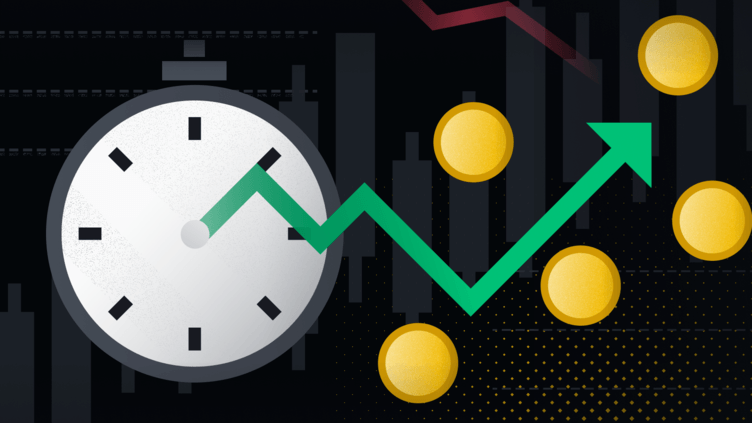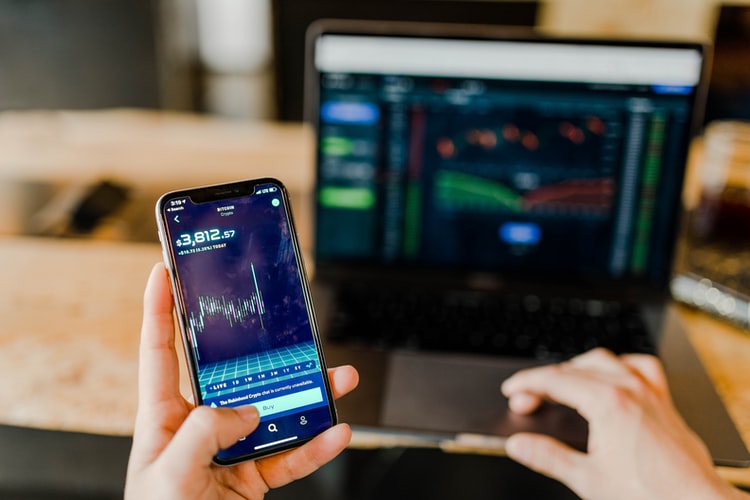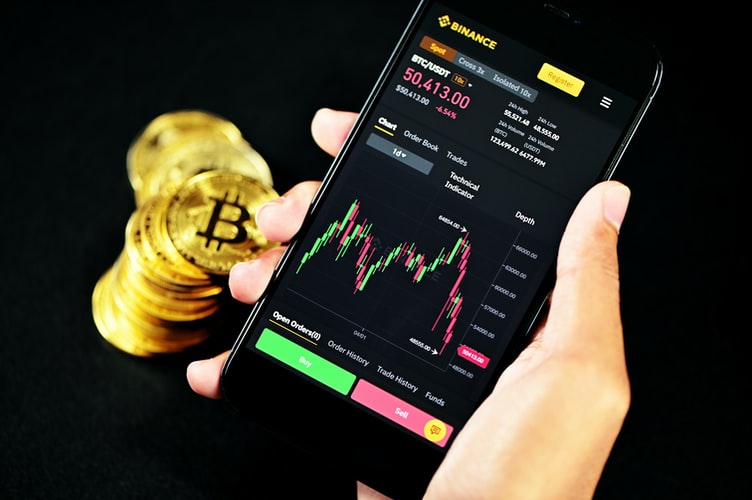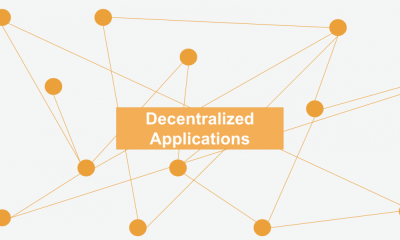Cryptocurrency
Maximizing Your Crypto Trading Strategy with Market Data Aggregation

Introduction
Crypto trading, or the buying and selling of cryptocurrency assets, has become a popular activity among investors and traders in recent years. The decentralized and digital nature of cryptocurrency markets, as well as their potential for high returns, have attracted a large number of participants. However, the high volatility and uncertainty in these markets can also make them challenging to navigate. One way that traders can improve their chances of success is by using market data aggregation tools and techniques.
Definition of crypto trading
Crypto trading involves the buying and selling of cryptocurrency assets, such as Bitcoin, Ethereum, and Litecoin, to make a profit. Crypto traders may use various strategies, such as buying and holding, day trading, or swing trading, depending on their risk appetite and investment goals. Some traders use fundamental analysis to evaluate the long-term prospects of a particular cryptocurrency, while others rely on technical analysis and chart patterns to make short-term trades.
Importance of market data aggregation in crypto trading
Market data aggregation is the process of collecting and organizing market data from various sources and presenting it in a useful format for traders. This can include prices, volumes, order book data, and other relevant information about cryptocurrency markets. Market data aggregation is important for crypto traders because it can help them make more informed and well-informed decisions about when and how to buy or sell their assets. By having access to a wide range of market data, traders can get a clearer picture of the market conditions and trends and can use this information to develop and refine their trading strategies.
What is market data aggregation?
Definition of market data aggregation
Market data aggregation is the process of collecting and organizing market data from various sources and presenting it in a useful format for traders. This can include prices, volumes, order book data, and other relevant information about cryptocurrency markets. Market data aggregation is important for crypto traders because it can help them make more informed and well-informed decisions about when and how to buy or sell their assets.
How to market data aggregation works
Market data aggregation typically involves the use of specialized software or platforms that collect and organize data from multiple sources, such as exchanges, brokers, and news websites. These platforms may offer a variety of features and tools to help traders analyze and interpret the data, such as charting, technical analysis, and alerts. Some market data aggregation platforms also offer real-time data feeds, which can be particularly useful for day traders who need to make quick and accurate decisions.
Types of market data aggregated
Market data aggregation typically includes a wide range of data types, including prices, volumes, and order book data. Prices refer to the current and historical values of cryptocurrency assets, which can be useful for identifying trends and patterns. Volumes refer to the amount of a particular cryptocurrency that is being bought and sold over a given time, which can be used to gauge market interest and activity. Order book data refers to the list of buy and sell orders for a particular asset, which can provide insight into the supply and demand dynamics of the market.
How to market data aggregation can improve your crypto trading strategy
Enhancing your decision-making process
One of the main benefits of market data aggregation is that it can help traders make more informed and well-informed decisions about when and how to buy or sell their assets. By having access to a wide range of data and analysis tools, traders can get a better understanding of market conditions and trends and can use this information to develop and refine their trading strategies. This can help traders make more informed and confident decisions about when to enter or exit a trade and can improve their chances of success.
Identifying trends and patterns
One of the key ways that market data aggregation can improve your crypto trading strategy is by helping you identify trends and patterns in the market. By collecting and organizing data from multiple sources, market data aggregation platforms can provide a comprehensive view of market conditions and trends. This can help traders identify patterns and trends that may not be apparent from looking at a single exchange or source of data.
For example, if you’re interested in trading a particular cryptocurrency, market data aggregation can help you identify key support and resistance levels, trend lines, and other technical indicators that may be relevant to your trade. By using this information to inform your trades, you can increase your chances of success and minimize your risk.
Comparing prices across exchanges
Another benefit of market data aggregation is that it can help you compare prices across different exchanges. Cryptocurrency prices can vary significantly from one exchange to another, which can significantly impact your trading strategy. By using market data aggregation to compare prices across exchanges, you can find the best deal and maximize your profits.
For example, if you’re looking to buy a particular cryptocurrency, you might use market data aggregation to compare the prices on different exchanges to find the best deal. Or if you’re looking to sell, you might use market data aggregation to find the exchange with the highest price for your asset.
Improving your risk management
Market data aggregation can also help you improve your risk management in several ways. First, by providing access to a wide range of data and analysis tools, market data aggregation can help you make more informed and well-informed decisions about when and how to enter or exit a trade. This can help you minimize your risk and maximize your chances of success.
Second, by giving you access to real-time data feeds, market data aggregation can help you stay on top of market movements and react quickly to changing conditions. This can be particularly useful for day traders who need to make fast and accurate decisions.
Finally, by allowing you to compare prices across exchanges, market data aggregation can help you find the best deal and minimize your risk. By finding the exchange with the lowest fees or the highest liquidity, you can reduce your risk and increase your chances of success.
Tips for using market data aggregation in your crypto trading strategy
Regularly updating your market data
One of the key tips for using market data aggregation in your crypto trading strategy is to regularly update your market data. Cryptocurrency markets are highly dynamic and constantly changing, and it’s important to stay on top of the latest market conditions and trends. By regularly updating your market data, you can ensure that you’re making informed and well-informed decisions about your trades.
Using multiple sources of market data
Another tip is to use multiple market data sources when aggregating market data. While it’s important to have access to a wide range of data, it’s also important to be aware of any biases or limitations in the data.
Analyzing market data in combination with other indicators and tools
While market data aggregation can be a powerful tool for crypto traders, it’s important to remember that it’s just one piece of the puzzle. To get the most out of market data aggregation, you should consider using it in combination with other indicators and tools.
For example, you might use market data aggregation to identify key support and resistance levels and trend lines, and then use technical indicators like moving averages or RSI to confirm these levels and trends. Or you might use market data aggregation to compare prices across exchanges, and then use fundamental analysis to evaluate the long-term prospects of a particular cryptocurrency.
By combining market data aggregation with other indicators and tools, you can get a more comprehensive view of the market and make more informed and well-informed decisions about your trades.
Conclusion
In conclusion, market data aggregation is an important tool for crypto traders looking to improve their chances of success. By collecting and organizing data from multiple sources and providing a wide range of analysis tools, market data aggregation can help traders identify trends and patterns, compare prices across exchanges, and improve their risk management. By using market data aggregation in combination with other indicators and tools, traders can get a more comprehensive view of the market and make more informed and well-informed decisions about their trades.
We encourage all crypto traders to consider incorporating market data aggregation into their trading strategies, as it can be a powerful tool for improving their chances of success.
Read More: gettmeseen.net, toppreference.com, bigjarnews.com, okeymagazine.com ,
Cryptocurrency
What you need to know about bitcoins

In recent years you have probably heard it often: the bitcoin. It was often reported on the news and thousands of people have become very rich (or very poor) because of it. If you have never studied bitcoin, it is probably all very vague for you. Still, it can be a very interesting topic that you can delve into. To get you started, I’ve outlined the basic information about bitcoins in this article here.
What exactly is bitcoin?
Developments in the field of internet and technology and the growing mistrust of banks after the financial crisis in 2008 led to an increase in demand for a new digital payment method. Bitcoin was the solution to this. Bitcoins are, to keep it simple, digital coins that you can use just like normal money. You can trade in them by buying and selling them, but you can also pay with them in various web shops. It is a so-called ‘cryptocurrency’.
Bitcoin’s value fluctuates enormously. In 2017, the bitcoin experienced an unprecedented rise and at one point the currency even had a value of almost 20,000 dollars. A lot of people talked about the coin this year, but a year later the hype faded and its value plummeted.
How to buy bitcoin
Everyone has the option to buy bitcoin. There are three ways to get bitcoins:
- Via an online exchange office. Here you can easily pay the bitcoins in euros via, for example, iDEAL. However, a currency exchange is not the cheapest way to get bitcoins, as the companies behind these offices charge a certain percentage in commission to make a profit.
- Through an exchange. Buyers and sellers come together at an exchange fair. Such a platform does not sell bitcoins itself, but makes it possible to exchange the currency for a payment. The costs here are a lot lower than with an exchange office, but it is a bit more complicated.
- From another user. You can also buy bitcoins from other users. People offer their bitcoins through online marketplaces. It is more anonymous than the aforementioned options, but therefore often a bit more expensive, check this guide .
How much is the bitcoin worth?
As mentioned earlier, the value of the bitcoin fluctuates enormously. Unlike regular stocks, bitcoin has no opening or closing price. The bitcoin exchange rate is established on international, online exchanges where the buyers and sellers trade in the currency. It’s a question of supply and demand. When the bitcoin price falls, the supply is greater than the demand and when the price rises, there is more demand than supply. Learn how to buy defi coins.
You can clearly see in figures that the value of the bitcoin differs so much. In the past 12 months, bitcoin was most expensive on June 27, 2019 (price of 11,426.17 $) and cheapest on February 15, 2019 (value of 3,177.63 euros). So there was a difference of more than eight thousand euros in between!
Where do you keep your bitcoins?
When you buy the digital coin, you naturally want to be able to store it somewhere safe. This can be done in a digital wallet, better known as a wallet. Such a wallet has a public and a private key. It is not a key as we know it, but is a kind of password; a series of dozens of letters and numbers that is very difficult to guess. The public key is a kind of letterbox: it is a digital address that people can send something to, only you can access it with your secret key.
There are five types of wallets, namely on your computer, on your smartphone / tablet, online, on certain hardware or on paper with QR codes.
Cryptocurrency
Ten Best Cryptocurrencies to Invest in

As cryptocurrency becomes more and more popular, many people are looking for the best cryptocurrency to invest in. There are a lot of cryptocurrencies out there, so it’s hard to know which ones will grow in value over time. In this article, we’re going to talk about the 10 best cryptocurrencies you should consider investing in.
– Bitcoin – One of the best cryptocurrencies to invest in. Despite its recent price fluctuations, it’s a strong coin that has been around for years and is only likely to continue increasing in value.
- Litecoin – Another best cryptocurrency with an excellent reputation because of its ability to handle high volumes of transactions at low prices. It was created by Charlie Lee as a fork from bitcoin so shares some similarities but also provides unique features (like faster transaction confirmations).
- Ripple – This best cryptocurrency isn’t owned or operated by any government making it decentralized like bitcoin while also being fast which may be appealing if you’re looking for something more than just your average crypto investment. Many people believe ripple could replace fiat currency someday soon.
- Stellar – This cryptocurrency is best for those who want to make transactions quickly and cheaply. It was created by Jed McCaleb as a fork from Ripple because he felt some features were lacking in that currency, like decentralization and low transaction fees.
- Bitcoin Cash – Another best cryptocurrency with an excellent reputation thanks to its ability to handle high volumes of transactions at low prices (like bitcoin). However, it’s also more scalable than bitcoin which means the network can process larger blocks of information sooner (resulting in faster processing times) and has lower miner fees making it cheaper when you move your coins around on exchanges or just need them verified for whatever reason.
- Ethereum Classic – If what you’re looking for is something similar to ripple but without all the controversy, then ethereum classic may be best for you. A lot of people are calling it “the next bitcoin” because its value has increased by huge margins over a short period and is quickly pushing to become one of the best cryptocurrencies out there (even more so than litecoin).
- Dash – The best cryptocurrency to invest in, according to many experts who have analyzed it. It has a low fee and high transaction speed which is what consumers want these days when they’re looking for major currencies that will last them well into the future.
- Enterprise Blockchain – In addition to these well-known cryptocurrencies, it’s worth mentioning the growing importance of Enterprise Blockchain technology. Enterprise Blockchain solutions are being adopted by businesses across various industries to enhance security, transparency, and efficiency in their operations. This technology holds the potential to revolutionize how businesses manage their data and transactions, making it a significant consideration for those looking to invest in the future of blockchain technology.
– Monero – With its emphasis on privacy (and lack of records) monero may be best if you are someone who values anonymity or just doesn’t like how much information about yourself you have online because everything from social security numbers to banking statements could show up as being associated with your identity there.
– Ethereum – Best cryptocurrency to invest in because it’s not only the best performing one of all time but also has a fair amount of scalability and versatility. It is more than just a digital currency, after all.
– NEO – Best cryptocurrency to invest in because it is an original, open-source blockchain technology with a high success rate. It’s also got some great smart contract capabilities.
– XRP – Best cryptocurrency to invest in because it is the best performing currency of 2017! It’s also a lot more scalable than most other digital currencies.
– Stratis –This is best if you want something that is going into industries like financial services and retailing because it specializes in those sectors! This coin will have a lot of momentum shortly.
– Electroneum –This is best because it is one of the few cryptocurrencies that can be mined with a mobile phone, and not just on a mining rig!
– Stellar Lumens – Best cryptocurrency to invest in if you want something that has low transaction fees, quick transactions times, and supports various types of currency pairs. It’s also very scalable which means people will most likely continue investing time and money into this coin for years to come.
– OmiseGO : This is best because they have their digital wallet called OMG Wallet where users can send fiat currencies like USD or EUR over the blockchain network as well as other cryptocurrencies like Ethereum (ETH).
Cryptocurrency
Binance vs. Coinbase, what should a user choose?

Binance(BnB) and Coinbase are cryptocurrency platforms that have very different approaches. If we talk about Binance vs Coinbase, we can see that the basic difference is that Coinbase is an American-based exchange that specifically originated for the novice with an easy interface and very few types of transactions. At the same time, if a user wants to know what is bnb (binance) then Binance has a sharp learning curve. It helps to supports advanced users. Binance facilitates international traders with several currency trading options. Even though Binance is a user-friendly plate form that offers three stages and is organized upon the trading experience, it is not easy to use as Coinbase.
Pros and cons of Binance and coinbase
Binance:
Advantages
- It offers Over 500+ cryptocurrencies for trading options
- It is one of the less expensive platforms to use
- Huge transaction types
Disadvantages
- American investors cannot use the Binance platform
- Binance exchange is restricted
- It can be overburdened, even for experienced customers
- Non-existence of built-in digital wallet
- Regulatory problematic in various countries and under interrogation in the U.S.
Coinbase:
Advantages
- A user-friendly platform
- Well-known and trustworthy by American regulators
- Multiple methods to buy cryptocurrency
Disadvantages
- Huge fees for transactions and payment ways
- Limited pro options for experienced traders
- A lesser type of transaction than other platforms
Features of Binance and Coinbase:
Binance and Coinbase are the platforms that have been made for different types of users. By analyzing Binance vs. Coinbase comparison data as accurately as possible, users can easily notice a massive variation in their feature sets. Nonetheless, Binance and Coinbase both offer mobile apps with watch lists or an option of live price tracking, but the analogies stop at:
With Binance, a customer can get:
- A gifted center that offers challenges and giveaways as an option to get crypto
- Provides advanced charting facility with several indicators and overlays
- Public API keys for combining different software tools
- More than 13 types of transaction
- The facility to utilize third-party digital wallet and Trust Wallet
- Users are present in 180+ countries that can trade on Binance, while only 43 states can utilize Binance.US, excluding Louisiana, Idaho, Connecticut, New York City, Texas, Vermont, and Hawaii
- S. users can’t pay through credit cards
Coinbase provides more features for American residents but fewer options for international traders. Its features include:
- A user can use a safe, stand-alone digital hot wallet
- It can withdraw money to a PayPal account
- It is available in 100+ countries and 49 states, while no trading option available for Hawaii residents.
- A newsfeed exhibit the latest cryptocurrency info
- An optional pro platform with few charting features, which includes the ability to trace the exponential moving averages
- Can get crypto by watching short videos
Conclusion:
Binance provides the user everything about crypto-related on one platform. It is easy to use for newcomers to sign up and start trading. Coinbase offers an easy interface for the sale, purchase, and trade of cryptocurrency. Users can also use their mobile application to access on the go. Binance and Coinbase both provide access to the top cryptocurrencies of the market. Coinbase supports 44, while Binance has accessed more than 500 cryptocurrencies.
To find out more currencies on Binance, a user can review the market listings. To view all tradable assets on Coinbase, a customer should check its listing prices.
-

 Social Media10 months ago
Social Media10 months agoWho is Rouba Saadeh?
-

 Apps10 months ago
Apps10 months agoWhy is Everyone Talking About Hindi Keyboards?
-

 Social Media10 months ago
Social Media10 months agoMati Marroni Instagram Wiki (Model’s Age, Net Worth, Body Measurements, Marriage)
-

 Entertainment10 months ago
Entertainment10 months ago12 Online Streaming Sites that Serve as Best Alternatives to CouchTuner
-

 Apps10 months ago
Apps10 months agoThings you need to know about Marathi keyboard today
-

 Apps10 months ago
Apps10 months agoStuck with Your default Bangla keyboard? Isn’t it time for a change?
-

 Entertainment10 months ago
Entertainment10 months agoMovierulz Website: Movierulzz 2021 Latest Movies on Movierulz.com
-

 Social Media10 months ago
Social Media10 months agoBrooke Daniells: Everything About Catherine Bell’s Partner






